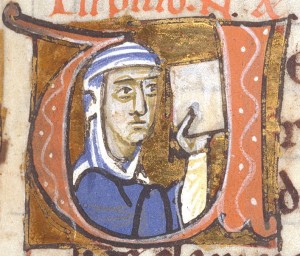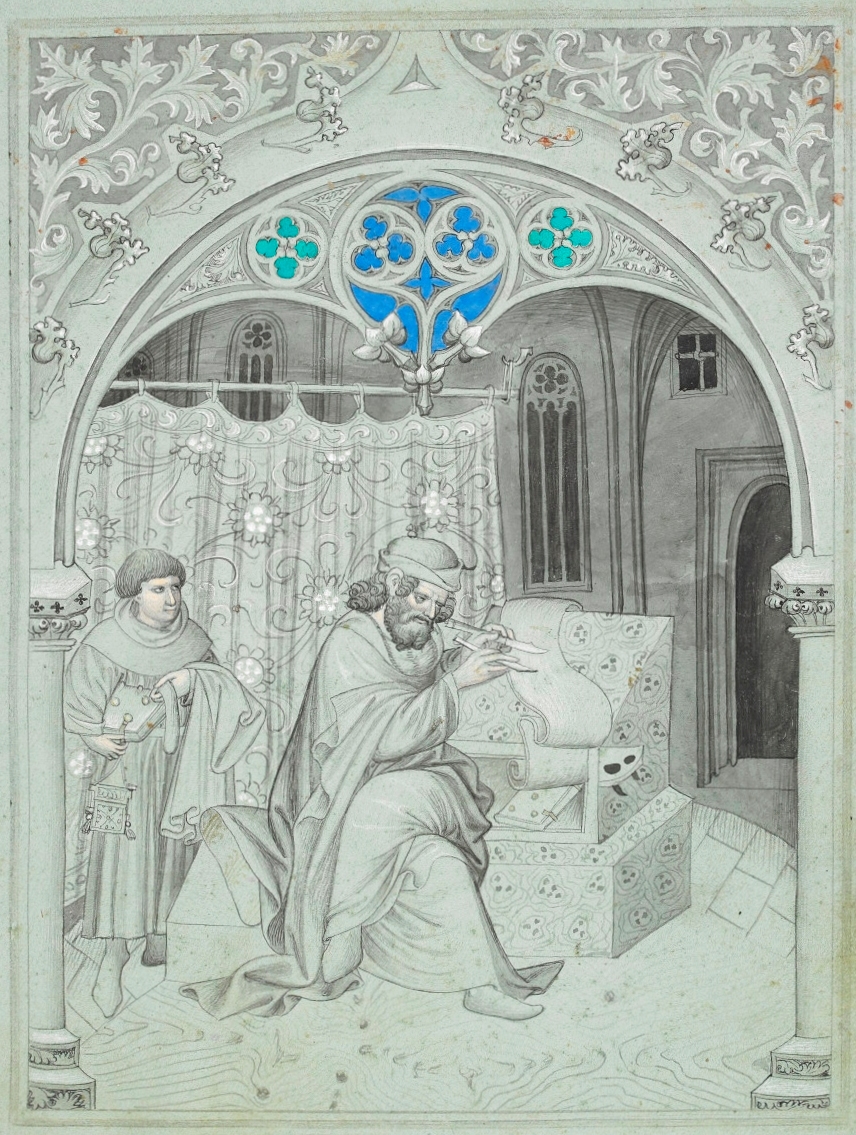
Office of the Dead, Oxford, c. 1220-1240; British Library Arundel MS 157, f. 134r
In fall of 2014, University of Notre Dame graduate students had the opportunity to explore the world of medieval manuscripts under the guidance of Professor Kathryn Kerby-Fulton and postdoctoral fellow Nicole Eddy. Manuscript Studies is an exciting and quickly growing field, fueled in part by the explosion of digital resources for this study: libraries and archives around the world are digitizing their collections, making it easier than ever before for students, scholars, and the general public to get a close-up view of medieval Europe’s heritage of book history. Not only that, but the study of manuscripts — books literally “written by hand,” each one unique — can give a deeper perspective on questions that excite us today. In a world of e-readers and audiobooks, what does it mean to say we have “read” a “book”? How do the physical materials of books affect our understanding of the text? How, we ask, did earlier readers approach the works we study today, and what can their readings teach us? And what can we learn from things outside the text block, the pictures and marginal notes that were the Middle Ages’ answer to today’s hyperlinks or comment fields?

Mandeville’s Travels, Bohemia, first quarter of the 15th century; British Library Additional MS 24189, f. 4r
In this blog students will, over the coming months, share the fruits of their researches, spotlighting some of the fascinating finds they have made in manuscripts around the world. We will have a number of topic threads on subjects we hope will be of interest to a wide range of readers: “Medieval and Early Modern Poetics: Theory and Practice,” “Mysteries of Medieval Codicology,” “Multimedia Reading Practices and Marginalia: Medieval and Early Modern,” and “Medieval Animals and their Literary Afterlives.” We hope you enjoy exploring these beautiful and captivating books as much as we have.
Nicole Eddy
Postdoctoral Research Associate
Medieval Institute
University of Notre Dame

Book of Hours, France, c. 1430-c. 1440; British Library Harley MS 2900, f. 85r
